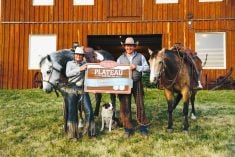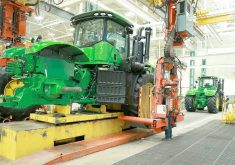What better way than to use scenes of alleged horrendous horse cruelty to shock gullible citizens into some sort of reaction?
The state of processing horses for meat in Canada has again become a sensational headline in the mainstream urban media. Video scenes of alleged cruelty were recent feature news on national TV networks. No one condones any animal cruelty, but the regular release of these so-called undercover videos by animal rights groups is becoming suspect.
The horse videos in particular are suspicious as they only began to surface after all the horse-slaughter plants in the U.S. were closed by statute after a successful lobby by animal-rights organizations. That saw a flood of slaughter horses exported to Canada, which undermined the intent of the American legislation. Obviously that annoyed the groups that had lobbied so long for the U.S. horse-slaughter ban.
Read Also

Guarding against misinformation: Do you believe in house hippos?
Misinformation and disinformation run rampant in today’s digital age. Farmers must be wary of the digital dangers and know how to keep themselves safe.
Subsequently a group called the Canadian Horse Defence Coalition (CHDC) seemed to have suddenly become active and is the source of the supposedly incriminating video evidence. It would come as no surprise to find out that this group is sponsored and financed by similar American groups. In fact it would make perfect sense from a political and tactical perspective for Americans to set up such a front group to pursue the cause into Canada, especially when this country’s horse plants are thwarting their efforts in the U. S. Such infiltration is nothing new, organizations such as Defenders of Wildlife, RiverKeepers, Ecojustice (formerly Sierra Legal Defense) and others all claim to be Canadian, but their American roots and ongoing links are obvious.
I expect the anti-horse-slaughter strategists figured out early that it was going to be very difficult to get Canadian horse plants closed as they were in the U.S. They also probably found that the North American Free Trade Agreement made it almost impossible to stop the free trade and flow of horses between Canada and the U. S. What was left to them was to try and use public opinion and the government regulatory process to harass the existing Canadian horse plants out of business. What better way than to use scenes of alleged horrendous horse cruelty to shock gullible citizens into some sort of reaction?
Horses are a much-beloved animal by humans and probably rank up there in the emotional scale with dogs, cute baby seals and dolphins. That doesn’t help the cause of horse processing.
Undercover video
A couple of years ago the CHDC released an undercover video of an alleged horse-cruelty incident at a plant in Saskatchewan. It was first shown on a news program on the CBC. Questions arose immediately as to whether it was bogus being the scenes were so grainy and sketchy and could have been made anywhere or even purposefully created. I have not been able to find out whether any one or any agency even bothered to authenticate that video.
In the end it doesn’t matter because the damage was done by the first impression of television viewers. The mainstream media is usually loathe to admit that they may have been misled so a retraction is unlikely. Crackerjack investigative journalists also don’t gain much by having to go back to disprove a sensationalized story.
The most recent video was allegedly taken at a horse plant in Fort Macleod. Again most mainstream media treated it is as a matter of fact. The horse-defence group cleverly protected itself this time from any doubters by stating that the video contained a scene of the actual premises and audio sounds that proved it was taken at the Alberta plant. That may convince the gullible, the biased and the converted but with today’s incredible digital technology, almost any scene can be created and doctored to prove a point. But again none of that matters as the first impression is all that matters and the CHDC scored another public relations victory. Its unlikely this video will ever be authenticated either.
These sorts of videos will continue to be cranked out by lobby groups because they are successful in pursuing the cause and most importantly in raising a steady stream of donations. Be they scenes of human degradation and starvation in Africa, abused dogs and cats, and horses and baby seals being killed they are all sure-fire ways to get attention, and they work.
The problem for animal agriculture anywhere is that killing animals is not a pretty sight and unless ways are found to make it much more discrete and invisible, these undercover videos whether real or imagined will continue to find their way into the eager and unquestioning hands of a lot of urban media outlets.














